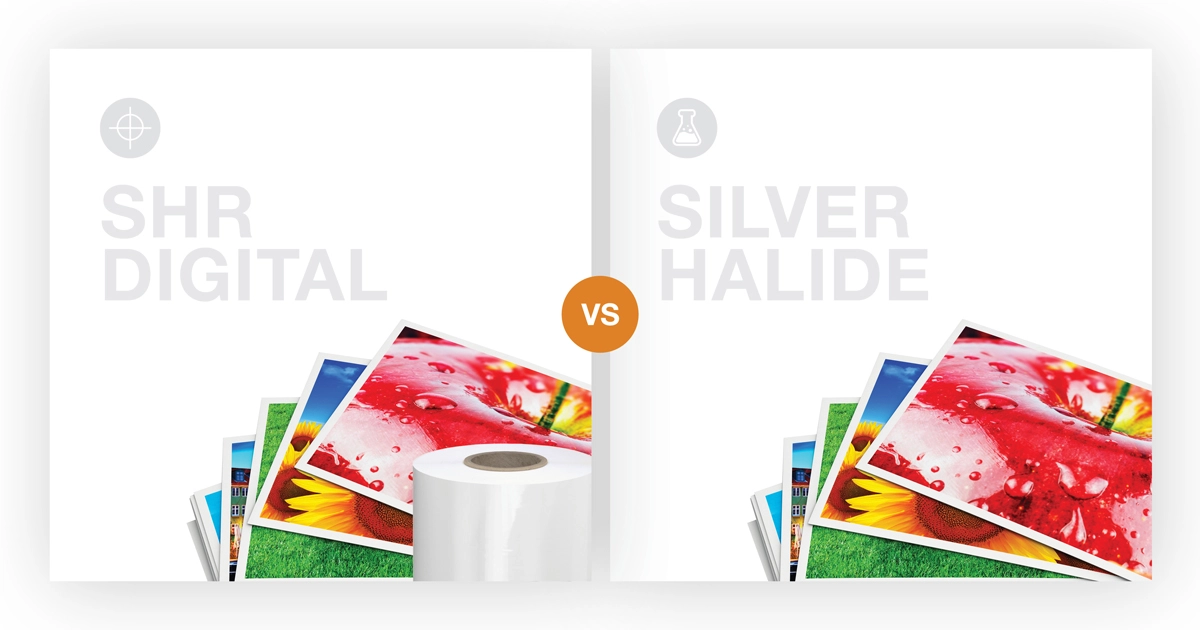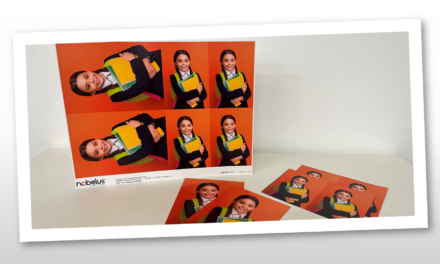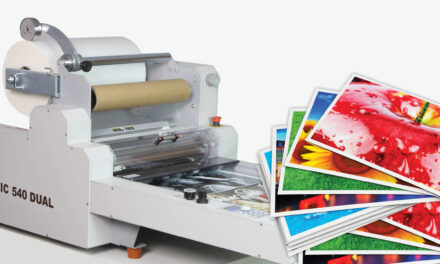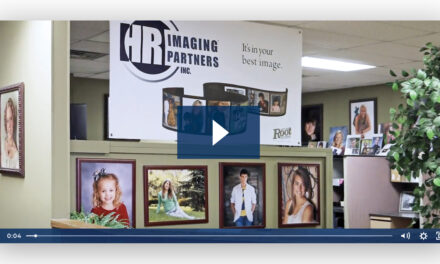HOW SILVER HALIDE PAPER FOR PHOTOS IS BEING PHASED OUT
Many photo labs have become aware of the supply chain issues surrounding the industry, a topic we covered in our previous blog post, Silver Halide Replacement: The Future of Photofinishing. Fujifilm photo paper and Kodak paper remain the only two options, leaving customers with little recourse if they are unhappy with pricing or trade terms. As sourcing silver halide paper for photos continues to prove difficult for most photo labs, a growing percentage are turning to other solutions.
Currently, the most accessible and sustainable alternative for the photofinishing market is silver halide replacement, or SHR™. SHR is a photofinishing method that utilizes digitally printed photos and specialized thermal lamination to create high-quality photographs that emulate the look and feel of traditional silver halide paper for photos. By making this swap, photo labs can replace Kodak and Fujifilm paper with readily available materials that are far easier to source.
SHR PHOTOS VS KODAK AND FUJIFILM PHOTO PAPER
When comparing SHR photos to photos produced using Kodak or Fujifilm paper, it is crucial to understand that the two photofinishing methods differ in more than just the materials used. Return on investment, market growth potential, and customer satisfaction are all factors that play a role when a photo lab chooses to integrate SHR into their processes.
- Vendor Options
While silver halide paper is currently available through only two suppliers, the materials needed for SHR can be found through many different vendors. Photo-quality paper, thermal laminates, and even digital inks can all be sourced from different companies all competing for the photo lab’s business, enabling the printer to search for the option that works best for them rather than being forced into business with one or two distributors.
- Material Costs
Due to these diverse vendor options, photo labs who move to SHR are in an ideal position to lower their material costs significantly. While specialty paper for photos continues to go up in cost, standard paper and thermal laminates are not subject to the same bottleneck pricing. If one vendor is not a good fit, photo labs can choose from a diverse range of suppliers.
- Environmental Effects
Silver halide photos require the use of harmful chemicals that end up being washed away into our wastewater systems. These chemicals are difficult to remove from the water supply and have a far-reaching effect on communities. SHR photos are printed using a digital press and protected with thermal lamination, completely eliminating the chemicals that would otherwise be flushed out during cleanup.
- Durability
While silver halide photos are prized for their resistance to smudging or scratching, Fujifilm photo paper is prone to fading, cracking, and creasing as it is handled over many years. In contrast, laminated photos are extremely resistant to damage such as creasing, scuffing, and fading. Customers love SHR photos as they help them preserve their most precious memories for generations.
- Image Quality
Silver halide paper for photos is known for bringing out beautiful depth of color in landscapes and personal photos. However, developed photos can suffer from blurriness as details and contrasting elements are usually not very sharp. A digital press is ideal for photographs with sharp details and a broad color gamut, such as text-heavy prints.
- Equipment Requirements
Silver halide photos require extremely specialized equipment that cannot be used for anything other than developing photos and have limited options for maintenance and repairs. As SHR uses the same digital presses, laminators, and tertiary equipment as the rest of the print industry, photo labs open the door to other markets and photo applications that would not be accessible with silver halide.
- Vendor Support
When vendor options are as limited as they are with silver halide paper, it only makes sense that support would be limited, as well. Orders are highly transactional, equipment support ends after purchase, and customers are mostly left to figure out solutions on their own. Photo labs who partner with Nobelus to integrate SHR into their business see ongoing support for both laminates and their laminating equipment, meaning they are primed for long-term success with less stress and setbacks.
INTERESTED IN LEARNING MORE?
If you want to learn more about SHR and how it can help take your photo business to the next level, check out our website or reach out to our team to speak with a solutions expert over the phone. It is our goal to help every photo lab succeed through dedicated training, excellent service, and ongoing customer support.





